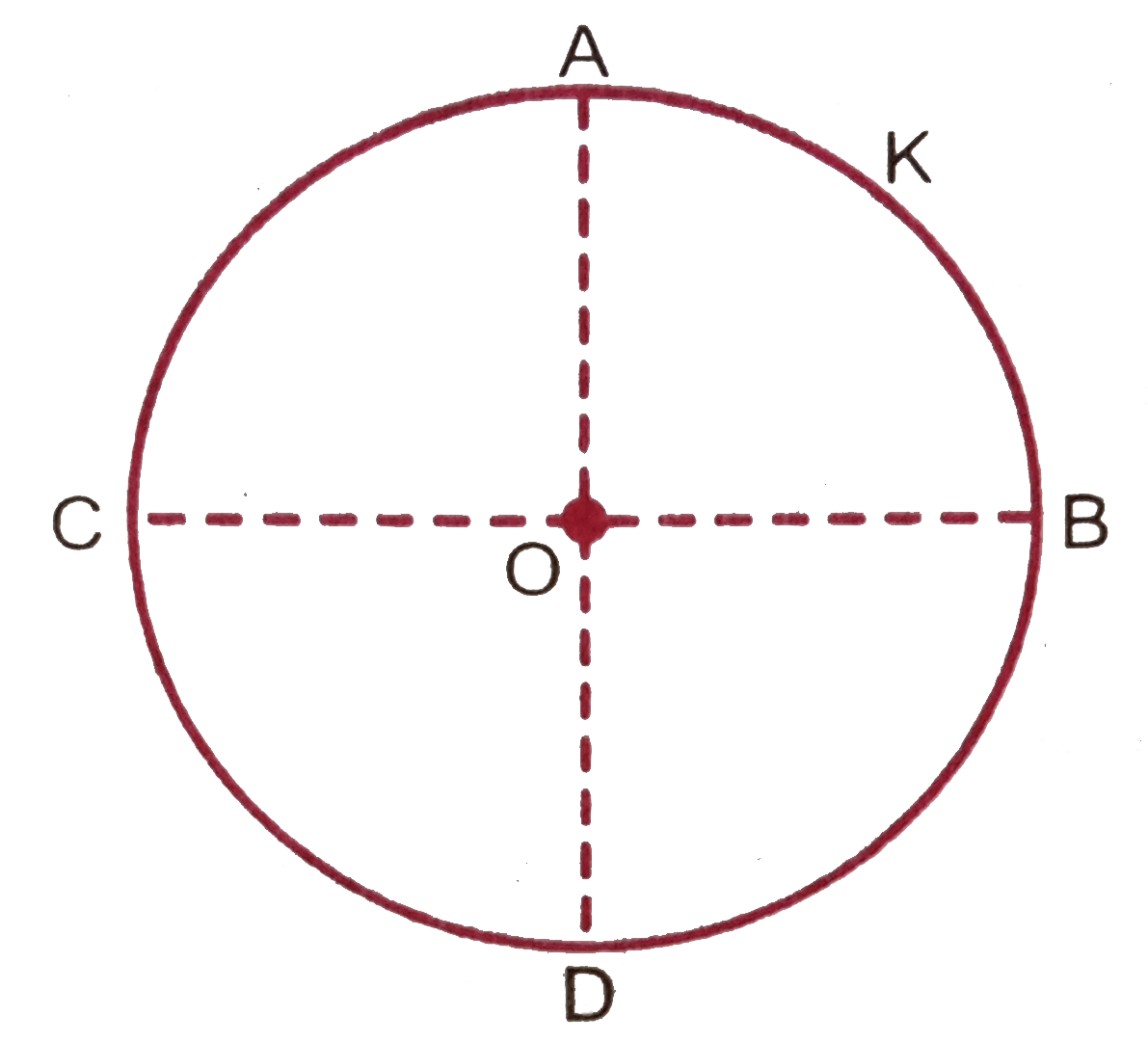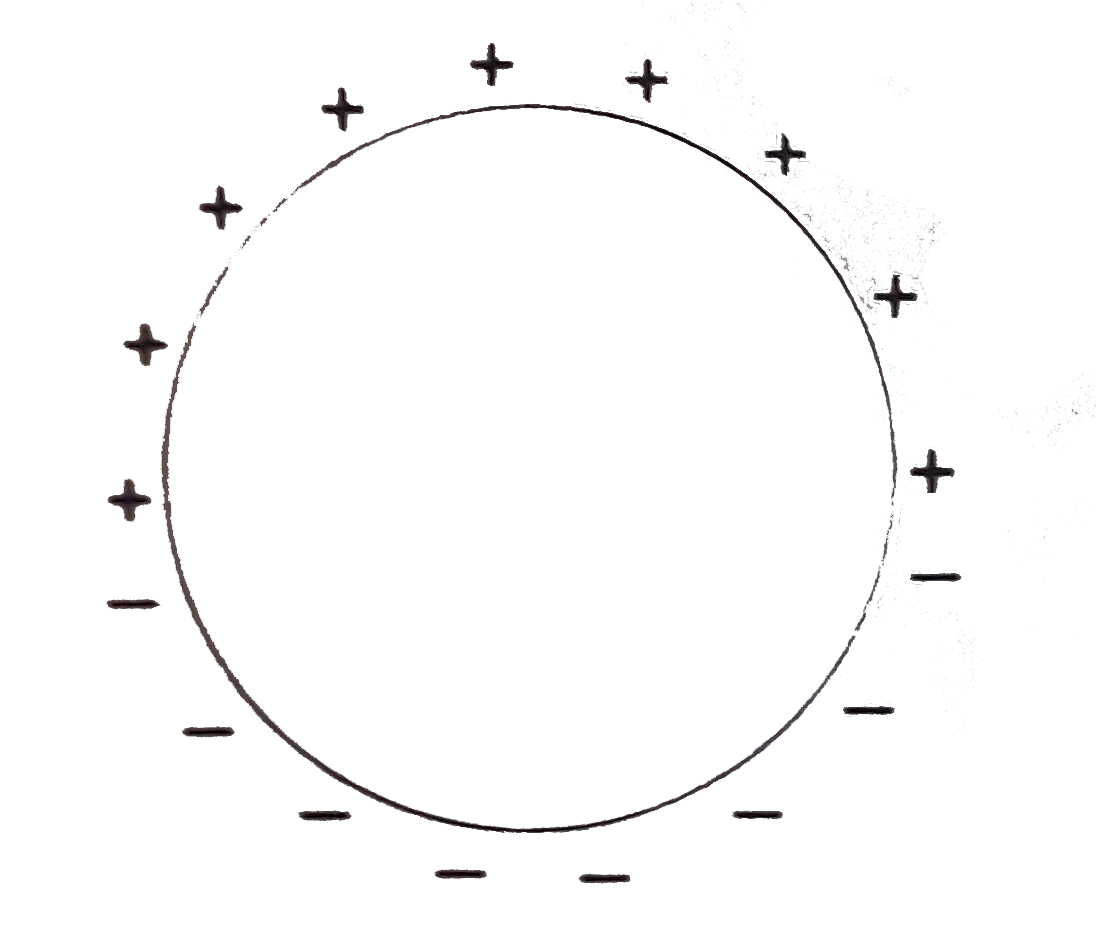Statement I:A uniformly charged disk has a pin hole at its centre. The electric field at the center of the disk is zero.
Statement II: Disk can be supposed to be made up of many rings. Also, electric field at the center of a uniformly charged ring is zero.
Statement I is true, Statement II is True, Statement II is a correct explanation for statement I.
Statement I is true, Statement II is True, Statement II is Not a correct explanation for statement I.
Statement I is True, Statement II is False.
Statement I is False, Statement II is True.
The correct Answer is:A
To solve the problem, we need to analyze both statements and determine their validity, as well as the relationship between them.
Step 1: Analyze Statement I
- Statement I: A uniformly charged disk has a pinhole at its center. The electric field at the center of the disk is zero.
- Explanation: For a uniformly charged disk, the electric field at any point along the axis (including the center) is determined by the contributions from all the infinitesimally small charge elements on the disk. Due to symmetry, the horizontal components of the electric field from opposite sides of the disk cancel out, leading to a net electric field of zero at the center.
Step 2: Analyze Statement II
- Statement II: The disk can be supposed to be made up of many rings. Also, the electric field at the center of a uniformly charged ring is zero.
- Explanation: A uniformly charged disk can indeed be thought of as being composed of many concentric rings. The electric field at the center of a uniformly charged ring is zero because the contributions from all the charge elements on the ring cancel out due to symmetry. Therefore, as the disk is made up of such rings, the electric field at the center of the disk will also be zero.
Step 3: Determine the Relationship Between the Statements
- Since both statements are true and Statement II provides a valid explanation for Statement I, we conclude that both statements are correct.
Conclusion
- Both Statement I and Statement II are correct, and Statement II is the correct explanation for Statement I.
Final Answer
- The correct answer is that both statements are true, and Statement II is the correct explanation for Statement I.
---
- Statement I: A uniformly charged disk has a pinhole at its center. The electric field at the center of the disk is zero.
- Explanation: For a uniformly charged disk, the electric field at any point along the axis (including the center) is determined by the contributions from all the infinitesimally small charge elements on the disk. Due to symmetry, the horizontal components of the electric field from opposite sides of the disk cancel out, leading to a net electric field of zero at the center.
- Statement II: The disk can be supposed to be made up of many rings. Also, the electric field at the center of a uniformly charged ring is zero.
- Explanation: A uniformly charged disk can indeed be thought of as being composed of many concentric rings. The electric field at the center of a uniformly charged ring is zero because the contributions from all the charge elements on the ring cancel out due to symmetry. Therefore, as the disk is made up of such rings, the electric field at the center of the disk will also be zero.
- Since both statements are true and Statement II provides a valid explanation for Statement I, we conclude that both statements are correct.
- Both Statement I and Statement II are correct, and Statement II is the correct explanation for Statement I.
- The correct answer is that both statements are true, and Statement II is the correct explanation for Statement I.
Topper's Solved these Questions
- MISCELLANEOUS VOLUME 3BOOK - CENGAGE PHYSICS ENGLISHCHAPTER - MISCELLANEOUS VOLUME 3EXERCISE - Comprehension Type
94 Videos
- MISCELLANEOUS VOLUME 3BOOK - CENGAGE PHYSICS ENGLISHCHAPTER - MISCELLANEOUS VOLUME 3EXERCISE - Interger Answer type
20 Videos
- MISCELLANEOUS VOLUME 3BOOK - CENGAGE PHYSICS ENGLISHCHAPTER - MISCELLANEOUS VOLUME 3EXERCISE - True and False
3 Videos
- MAGNETIC FIELD AND MAGNETIC FORCESBOOK - CENGAGE PHYSICS ENGLISHCHAPTER - MAGNETIC FIELD AND MAGNETIC FORCESEXERCISE - Multiple Correct Answer type
2 Videos
- MISCELLANEOUS VOLUME 5BOOK - CENGAGE PHYSICS ENGLISHCHAPTER - MISCELLANEOUS VOLUME 5EXERCISE - Integer
12 Videos
Similar Questions
Charge q is uniformly distributed over a thin half ring of radius R. The electric field at the centre of the ring is
View SolutionA thin conducting ring of radius R is given a charge +Q, Fig. The electric field at the center O of the ring due to the charge on the part AKB of the ring is E. The electric field at the center due to the charge on part ACDB of the ring is

View SolutionConsider a uniformly charged ring of radius R. Find the point on the axis where the electric field is maximum.
View SolutionIf a charge q is placed at each vertex of a regular polygon, the net electric field at its centre is zero. Show it.
View SolutionA current I flows along an inflinitely long straight thin walled tube. The magnetic induction at a point inside the tube at a distance r from its wall is
View SolutionAssertion : Half of the ring is uniformly positively charged and other half uniformly negatively charged. Then, electric field is zero at centre. Then , electric field is zero at centre.

Reason : At the centre of uniformly charged ring, electric field is zero. 1)If both Assertion and Reason are correct and Reason is the correct explanation of Assertion 2)If both Assertion and Reason are correct but Reason is not the correct explanation of Assertion 3)If Assertion is true but Reason is false 4)If Assertion is false but Reason is true
View SolutionFind the electric field at the centre of a uniformly charged semicircular ring of radius R. Linear charge density is λ
View SolutionThe maximum electric field intensity on the axis of a uniformly charged ring of charge q and radius R will be
View SolutionStatement I: If electric potential in certain region is constant, then the electric field must be zero in this region.
Statement II: →E=−dVdrˆv.
View SolutionA hemispherical shell is uniformly charge positively. The electric field at point on a diameter away from the center is directed
View Solution
